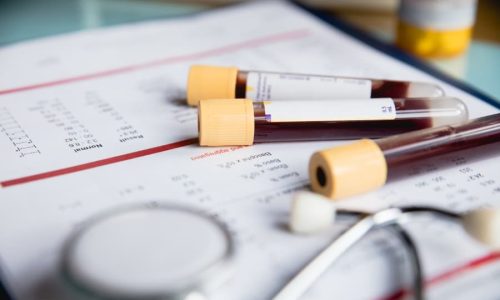
New Jersey Cancer Care Joins Regional Cancer Care Associates
Affiliation provides oncology practice with expanded resources as it pursues its commitment to providing patients with the latest therapies and best possible outcomes.
HIPAA Alert: Potential Data Breach Learn More
Questions on Oncology, Hematology and/or Infusion Clinical Services due to COVID-19 Crisis – CALL 833-698-1623
Important Information for Our Patients Regarding the Coronavirus.
RCCA Providing Area Cancer Patients with Access to Care During Coronavirus Outbreak
RCCA Offering Patients Virtual Visits During Coronavirus Pandemic
Bleeding disorders are a group of hematologic conditions that occur when blood is unable to clot properly. The inability to form blood clots following a cut or other injury can significantly impact overall health, so being aware of potential early-warning symptoms of a bleeding disorder is important.
The hematologists of Regional Cancer Care Associates (RCCA) treat both non-cancerous blood conditions, such as bleeding disorders, and cancers of the blood and blood-forming tissues. RCCA’s specialists offer advanced diagnostics and the latest evidence-based treatments for bleeding disorders and other conditions. This article reviews the common signs and symptoms of a bleeding disorder – and what you should do if they emerge.

During normal blood clotting, platelets, a type of blood cell, stick together and form a plug at the site of an injured blood vessel. Clotting factors, proteins that work with platelets to help clot the blood, then interact to form a fibrin clot. Acting as a plug, the clot holds the platelets in place. This allows the injury to heal while preventing blood from escaping the blood vessel.
The body produces more than a dozen clotting factors. If one of these factors is deficient, blood does not clot as it should. This can lead to a mild, moderate, or severe bleeding disorder. Bleeding disorders can be separated into two broad categories:
Inherited – or hereditary – bleeding disorders stem from the absence or deficiency of specific clotting proteins. Bleeding disorders that fall within this category include:
People also may develop bleeding disorders over the course of their lives. These conditions, which are termed acquired bleeding disorders, may be a consequence of an illness or of medications taken to treat an illness, among other potential causes. Platelet disorders are the most common type of bleeding disorders and are usually acquired rather than inherited.
Platelets are made in the bone marrow. When the platelet count falls too low, the platelets won’t properly form the clot needed to seal a wound. A lower-than-normal platelet count is called thrombocytopenia.
In rare cases, bleeding disorders such as hemophilia and von Willebrand disease can be acquired later in life. This is seen in patients whose bodies form antibodies that fight against the blood’s natural clotting factors.
Symptoms of bleeding disorders often depend on the type of disorder, and can range from mild to severe. Signs and symptoms of bleeding disorders may include:
Other signs and symptoms of a bleeding disorder include:
A person with a bleeding disorder may only become aware of the condition or experience symptoms after sustaining an injury or undergoing a medical procedure. Speak to your healthcare provider if you notice any of the above signs or symptoms.
Genetics and other factors, such as certain medical conditions and medicines, can cause bleeding disorders. In some cases, however, determining the underlying cause can be challenging.
The following risk factors can increase the chances of having a bleeding disorder.
While bleeding disorders can occur at any point in a person’s life, certain types are more common at specific ages. For example, acquired hemophilia A is more commonly seen in older adults than in younger people.
As mentioned, genetics play a major role in developing bleeding disorders. A person is at elevated risk if an immediate family member has a bleeding disorder.
Certain medical conditions or procedures also may increase the risk of developing an acquired bleeding disorder. These risk factors include:
Some medical treatments also can increase the risk of a bleeding disorder, including:
Although bleeding disorders can develop in both men and women, hemophilia is much more common in men. A woman’s risk of developing bleeding disorders, such as acquired hemophilia, is much higher during and after pregnancy than at other points in her life.
The hematologists of RCCA are experts in both in benign hematology (noncancerous blood disorders) and malignant hematology (cancers of the blood and blood-forming tissues). They make use of cutting-edge, evidence-based therapies and are adept at personalizing treatment for each patient.
RCCA also offers patients access to clinical trials, studies of investigational therapies that can connect qualifying patients with an additional, potentially effective treatment option.
RCCA has 22 conveniently located, community-based locations throughout New Jersey, Connecticut, Maryland, and the Washington, DC area. Contact us today to learn more about bleeding disorders or to make an appointment.
For more information or to schedule an appointment,
call 844-346-7222. You can also schedule an appointment by calling the RCCA location nearest you.

Affiliation provides oncology practice with expanded resources as it pursues its commitment to providing patients with the latest therapies and best possible outcomes.

Commitment, dedication and passion are attributes that show through in every aspect of care at Regional Cancer Care Associates.

Recent research has caused many healthcare professionals to reconsider their approach to screening men for prostate cancer. That’s because the disease (already the second most

Regional Cancer Care Associates is one of fewer than 200 medical practices in the country selected to participate in the Oncology Care Model (OCM); a recent Medicare initiative aimed at improving care coordination and access to and quality of care for Medicare beneficiaries undergoing chemotherapy treatment.